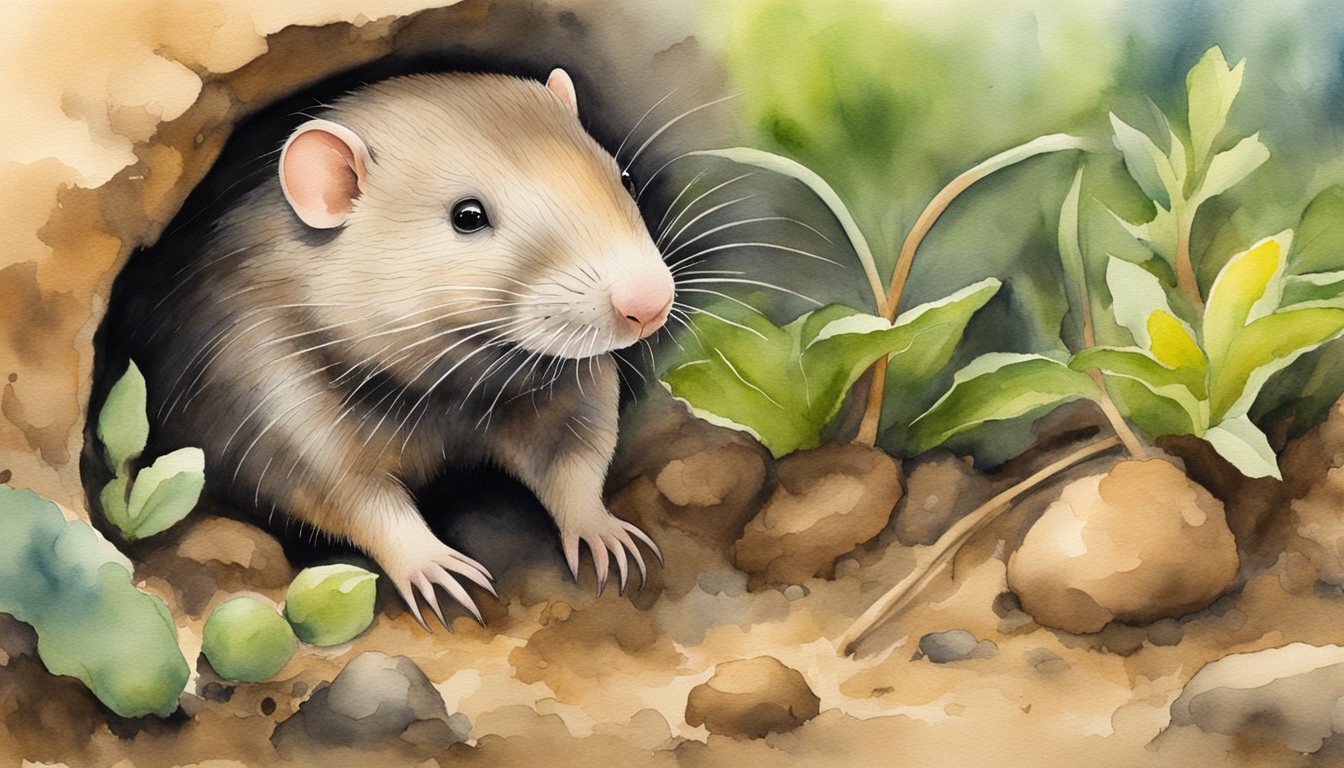Mole Rat Biology and Species
Mole rats are fascinating mammals with unique biological traits and social structures. They exhibit adaptations that allow them to thrive in subterranean habitats across various regions of Africa.
Physical Characteristics
Mole rats, including species like the naked mole-rat, are known for their distinctive physical attributes. They have a cylindrical body suited for life underground, with very little muscle mass on their limbs. Their skin is often wrinkled and lacks fur, aiding in movement through tight tunnels. Mole rats possess powerful jaws and teeth; their large incisors are used for digging and are a notable feature. Eyes of these creatures are tiny, and external ears are almost absent, which enhances their ability to navigate their dark environment.
Taxonomy and Classification
Mole rats belong to the family Bathyergidae, within the order Rodentia. This family encompasses several species, including the naked mole-rat (Heterocephalus glaber) and the Damaraland mole rat (Fukomys damarensis). They are eukaryotic organisms, belonging to the kingdom Animalia, phylum Chordata, and class Mammalia. Within Bathyergidae, there are genera such as Cryptomys and Heterocephalus, with the naked mole-rat being the sole species in its genus.
Habitat and Distribution
Naked mole rats are native to the Horn of Africa, found in countries including Ethiopia, Kenya, and Somalia. These eusocial mammals live in arid environments where they construct extensive tunnels and burrows. The soil type, as well as the irregularity of rain, plays a significant role in their distribution.
Diet and Foraging Behavior
The diet of mole rats primarily consists of tubers, roots, and bulbs, which they excavate with their sharp incisors. They have a herbivorous diet, and their foraging behavior is specialized to glean the underground parts of plants. The African mole-rat species are adapted to sustain on this limited food source available in their habitat.
Reproduction and Social Structure
Mole rats, particularly the naked mole-rats, have a unique eusocial structure akin to that of some insect species. They live in large colonies where a single queen reproduces, and the majority of workers, both males and females, are non-reproductive. These eusocial mammals demonstrate cooperative breeding; members participate in the care of the young across litters and defend the colony against predators and intruders.
Ecological Roles and Conservation Status

Mole rats play vital roles in their ecosystems and have unique conservation contexts. They influence their habitats profoundly but also face threats that require targeted preservation efforts.
Interaction with Ecosystem
Mole rats, particularly species like the naked mole-rat, are known as ecosystem engineers. Their extensive burrowing activities help aerate the soil, allowing rain and air to penetrate the ground, which is beneficial for plant growth. These burrows also provide habitats for other animals and can impact the distribution of nutrients in the soil. Furthermore, their ability to live in colonies helps with the complex task of tunnel construction and maintenance, impacting other subterranean species and the surface-dwelling ones.
Threats and Preservation Efforts
Despite their resilience, mole rats face threats from habitat destruction and the changing climate. However, conservationists are working to preserve species like the Damaraland mole-rat by maintaining their natural habitats and studying their unique traits, such as cancer resistance. The IUCN Red List provides assessments of many mole rat species, guiding conservation priorities. Active measures include protecting grassy habitats that are crucial for the survival of mole rat colonies.
Mole Rats in Human Culture
In human culture, mole rats, particularly the naked mole-rat, have garnered interest for their appearance and social structure. Residing in large colonies with a single breeding queen much like ants and bees, they display a social system known as eusociality. Exhibits at places like Smithsonian’s National Zoo have made mole rats more accessible to the public, increasing awareness and interest in their behavior and ecological significance. They are sometimes kept as pets, but their specialized needs must be considered to recreate their natural burrowing environment and dietary habits, including coprophagy or the reingestion of feces, which is crucial for their digestion.

